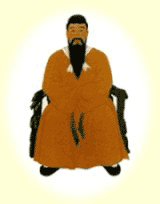Children doing 새배절
During 1st Jan of each year is Sul nal (설날) or New Years Day in Korea. Normally,Korean will wish us sehe bok mani baduseyo (새해 복 많이 받으세요). So, what does it means? Let us break this phrase down so that we can better understand this greeting. Sehe (새해) means ‘new year’. Bok (복) means ‘luck’. Mani (많이) means ‘a lot’. Baduseyo (받으세요) means ‘receive’. Altogether if we translated this literally it means, ‘Receive a lot of luck for the New Year,’ or ‘Good luck for the New Year.’
New Years Day is called Sul (설) in Korean. On sul (설), it is also customary for Korean people to wear a hanbok (한복) or a traditional Korean outfit. As you can see, the New Year is a time where Koreans practice many traditional rituals. It’s also a time that many people spend with their families.
Korean children follow a tradition called sebe jul (새배절) on the morning of New Years Day. Sebe jul (새배절) is a type of bow where you stand up and prostrate yourself with your forehead nearly touching the floor.The sebe jul (새배절) tradition goes way back in Korean history. Children perform sebe jul (새배절), adults will seh bae(a deep bow to the flow).It is supposed to be a sign of respect towards the elderly.
When children perform the bow, parents and grandparents will give their children and grandchildren some money called sebe don (새배돈) and words of wisdom. Sebe don (새배돈) is usually handed out until the child reaches high school or college. When the children grow up as an adults, especially if they already work, they will usually give their parents sebe don (새배돈). So, it just like a cycle, which is reversing back and the young takes care of the old.
The traditional new year meal is a soup of thinly sliced rice cake - TteokGuk(떡국) or variation of dumplings.Because everyone turns a year older with the start of each new year (not on their birthday), many people tell their children that they can not get older unless they have eaten some tteokguk. Some type of Duk(rice cakes,ttuk or duk) is enjoyed at every important Korean celebration, and the white rice cakes in the soup represent a clean start and new beginning for the new year.
After the meal, they will having their family time,could mean traditional outdoor games like kite-flying or noltigi.Some of them will playing Korean board games like yutnori(a board game that involves stick-tossing), younger generations playing video, sing karaoke or having a relax conversation.
Before this end, wish you all sehe bok mani baduseyo (새해 복 많이 받으세요) or Happy New Year. ^^
TteokGuk(떡국)
Ps --To know more about this, please visit Korea tourism website : http://english.visitkorea.or.kr/enu/SI/SI_EN_3_6.jsp?cid=941952
sources from: http://www.transparent.com/korean/sul-%EC%84%A4/ & http://koreanfood.about.com/od/holidaysandoccasions/a/NewYear_2.htm
by JY
by JY









































